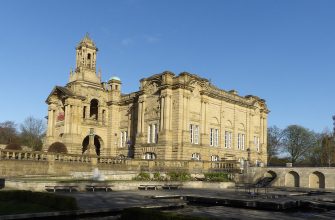Nestled in the heart of Cambridge, England, the Polar Museum, part of the Scott Polar Research Institute, is a treasure trove of polar history, artifacts, and exhibitions. This unique museum offers a fascinating insight into the heroic age of Arctic and Antarctic exploration, showcasing the triumphs and tragedies of polar expeditions. The museum is dedicated to the study of the polar regions and their critical role in the Earth’s climate system. It is a must-visit for anyone interested in polar research, polar science, and the history of human exploration of these extreme environments.
History of the Polar Museum
The Polar Museum, Scott Polar Research Institute, was established in 1920 as part of the University of Cambridge. It was named after Captain Robert Falcon Scott, who led the ill-fated Terra Nova Expedition to the South Pole. The museum was initially intended as a memorial to Scott and his men, but it quickly evolved into a world-leading center for polar research and education. Today, the museum houses a vast collection of artifacts, archives, and photographs relating to polar exploration, science, and history.
What to See
The Polar Museum’s collections are as diverse as they are extensive. Visitors can explore a wide range of polar artifacts, from the personal belongings of famous explorers to scientific instruments used in groundbreaking research. Highlights include:
- The last letters of Captain Scott and his team, written as they faced their tragic end in the Antarctic wilderness.
- Artifacts from the expeditions of Ernest Shackleton, another iconic figure of Antarctic exploration.
- Stunning Inuit art and other cultural artifacts from the Arctic region.
- A comprehensive collection of polar maps and charts.
- Photographs documenting the changing polar landscapes and the impact of climate change.
What to Expect
The Polar Museum offers a captivating journey through the history of polar exploration and science. The museum’s exhibitions are thoughtfully curated, combining historical artifacts with modern multimedia displays to bring the polar regions to life. Visitors can expect to learn about the harsh realities of life in the polar regions, the challenges faced by explorers, and the importance of polar research in understanding our planet.
Tours and Admission
The Polar Museum is open to the public and admission is free, although donations are welcome. Guided tours are available for groups and need to be booked in advance. The museum also offers a range of educational programs and workshops for schools and families.
Tips for Tourists
Here are some practical tips for tourists planning to visit the Polar Museum:
- Check the museum’s website for up-to-date information on opening hours and any special exhibitions or events.
- Allow at least an hour to explore the museum thoroughly.
- The museum is fully accessible for wheelchair users and visitors with mobility issues.
- Photography is allowed, but flash and tripods are not permitted.
In conclusion, the Polar Museum, Scott Polar Research Institute, Cambridge, England, is a fascinating destination for anyone interested in polar history, exploration, and science. Its rich collections and engaging exhibitions offer a unique insight into the extreme environments of the Arctic and Antarctic and the human endeavor to explore and understand them.








